To survive and publish in a tough economy takes innovation and new ideas.
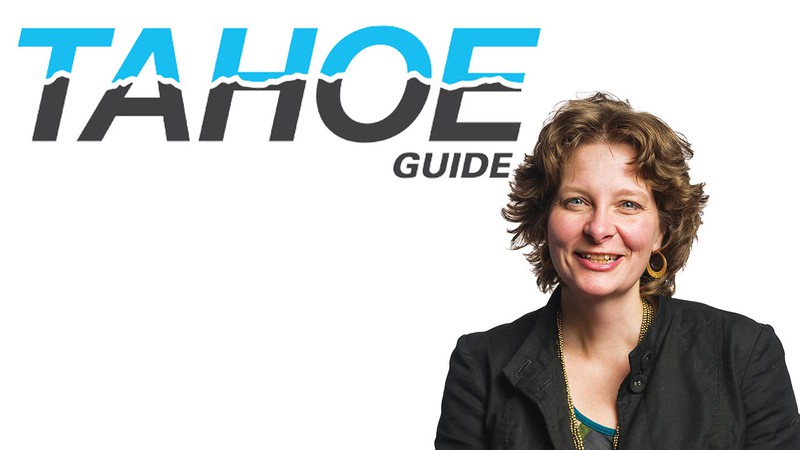
Courtesy of Katherine Hill
Every year, February marks another milestone for Katherine Hill, publisher and editor in chief of Tahoe Guide. On Feb. 18, 1982, North Tahoe Week hit the streets, marking the birth of what has become the preeminent guide to outdoor recreation, leisure, and culture in the Lake Tahoe region.
The ’80s were a different time. Freestyle skiing wasn’t an Olympic sport yet. The Sno-Park program wouldn’t be established for another two years. And it would be another year before the first snowboarding world championship would take place in Soda Springs.
Despite all the changes in winter sports—and the changes in winter weather—the magazine founded by David Mogilefsky has persevered. It remains locally owned and singularly dedicated to its mission of spreading the news about one of California’s most beloved vacation wonderlands.
Keeping It Local
After moving to Tahoe in 1998, Hill worked as a reporter and editor for many years before she purchased the magazine from its second owners, Dale and Shirley Good.
At the end of 2023 she rechristened it Tahoe Guide. As she wrote at the time, “The new name is fitting in many ways. It reflects our roots as the region’s original visitor guide.”
Another factor was a change in the frequency of her publication schedule, triggered by local economic conditions that are the result of both the pandemic and the vagaries of the weather.
Despite adversity, Hill continues to serve a loyal readership. She talked with California Local about her career in journalism, her goals for the magazine, and the creative measures she’s taken to survive in a tough business climate. The interview has been edited for length and clarity.
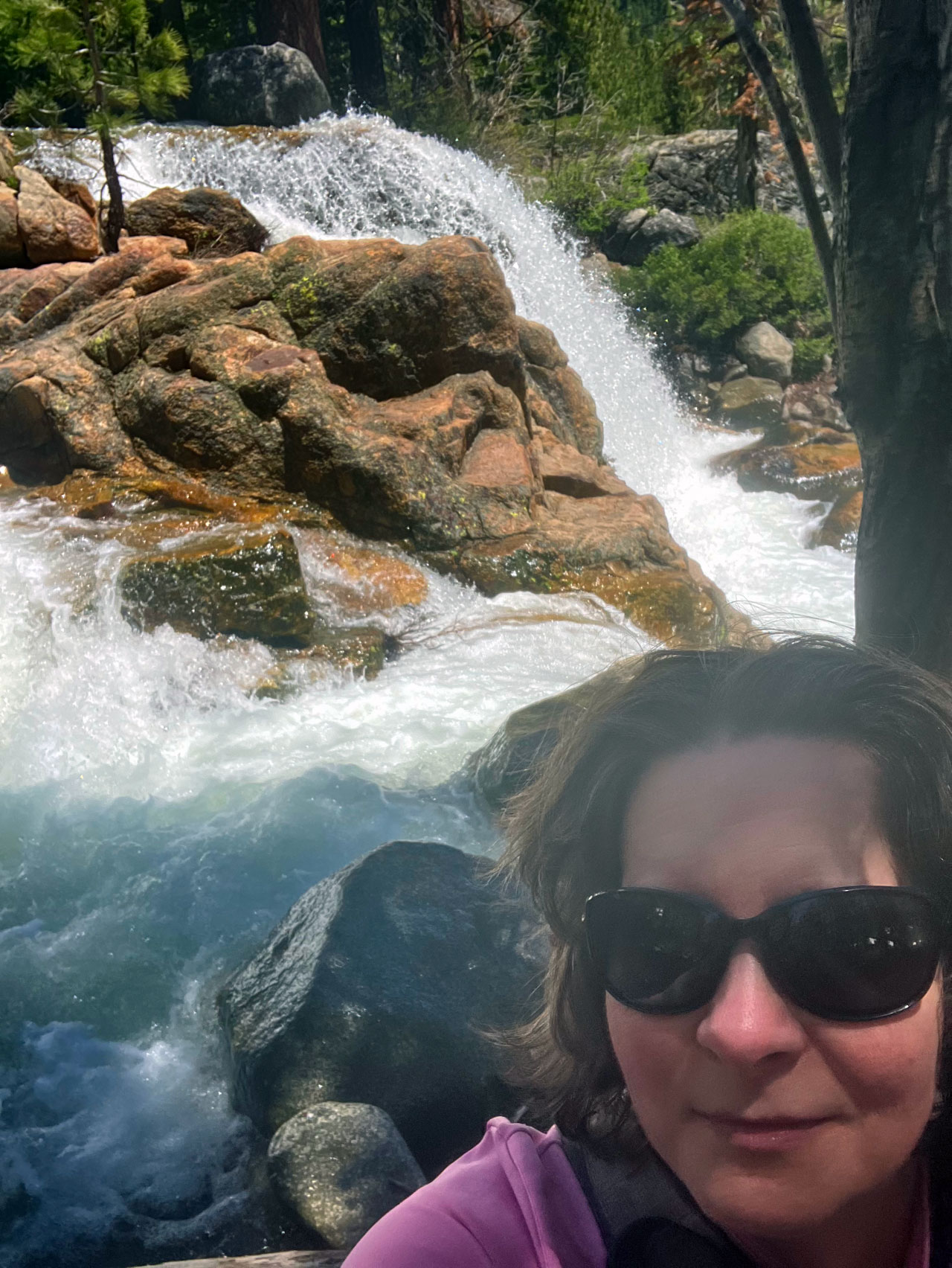
California Local: What brought you to the Tahoe region?
Katherine Hill: I’m an East Coast gal, but I had family in the San Francisco Bay Area. So we always visited as kids. We just loved everything about being out West. So we knew we’d somehow end up out here. After grad school—I got my grad degree at Old Dominion back in Virginia—I interviewed at the San Francisco Chronicle for some lowly copyeditor/assistant/nothing job, and I got another job offer to be the editor of Tahoe World, which used to be a weekly newspaper on the North Shore.
I came up for the interview and I saw the lake and said, “I’m taking this job, even if it’s just for a year.” You do things like that when you’re in your 20s. I could always go work in a windowless office some other time in the future.
What kind of paper was Tahoe World?
It was a great local community weekly newspaper. We did a lot of really good stuff. Unfortunately, it’s all gone. It used to be owned by Swift, which got bought out by Ogden, which is a pretty major conglomerate and not the friendliest to newspapers. We did typical stuff. Utility districts, tax measures, sales tax and school districts. We also did environmental coverage.
I quit, and went to work at the Tahoe Weekly. It was mostly recreation and entertainment and event coverage, but they hired me specifically because they wanted to increase feature coverage and more articles written by an actual journalist. I was there for three years.
What did you do after that?
I moved to Mississippi and became a managing editor at a six-day-a-week newspaper. I loved that job too, but I couldn’t keep working 60, 70, 80 hours a week. I was there for four and a half years, and then I decided I needed to take care of myself. We were understaffed and overworked. Reporters were doing graphic design and photography and cranking out four stores a week and being on call 24/7. I love news journalism and I miss it all the time, but I just couldn’t do it anymore. I moved back to Tahoe.
What happened next?
Tahoe Weekly heard I was back and asked me to come in on an interim basis. And then I became the associate publisher in 2007. During that time we really made a lot of changes to the magazine. We always stayed within our focus areas—recreation and the outdoors, arts and culture, events and entertainment—but that’s a broad spectrum. I started to try to broaden the horizons a little bit of what those topics meant to the community.
The owners were looking to retire. They wanted someone who was local and who was committed to keeping the magazine going, and where we were heading, and so it worked out after a couple of years of going back and forth with them for me to take over in 2013.
It is an intense job, and especially with the pandemic and the seasonality of Tahoe—with no snow, too much snow. During the pandemic we had too many tourists. Now we’re having the opposite, where there are not enough tourists. Businesses are suffering. It’s a roller coaster.
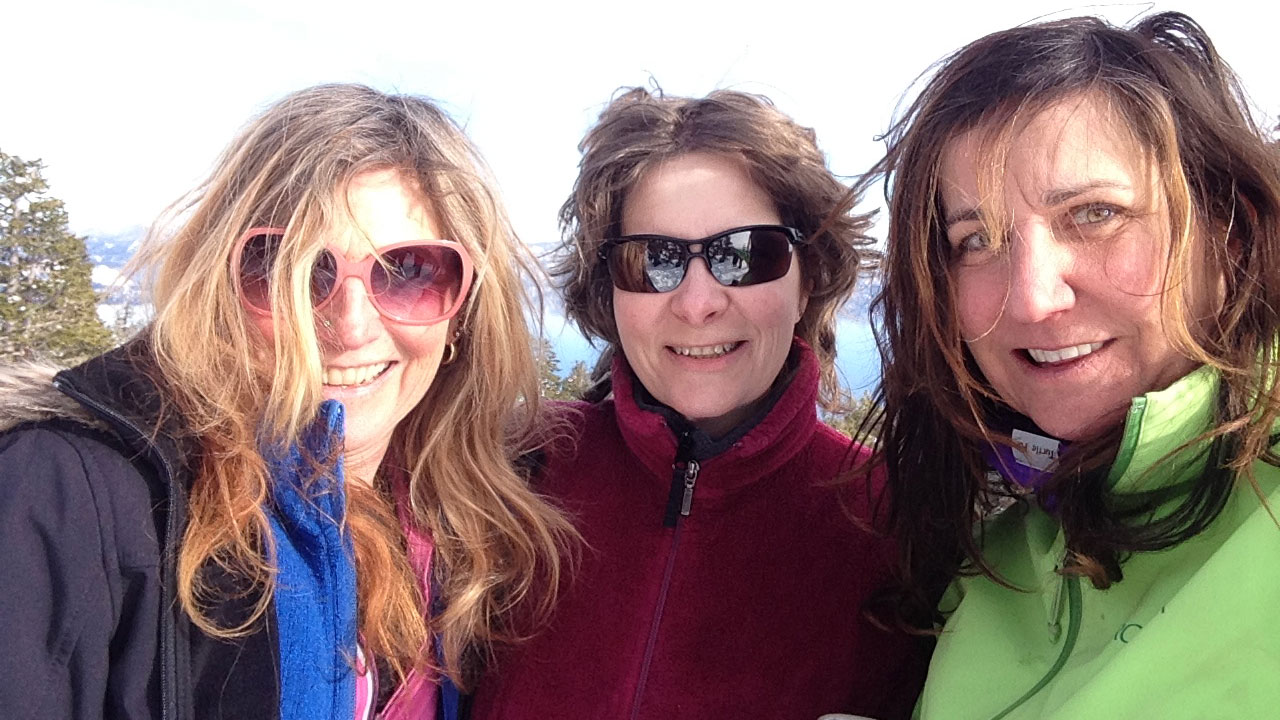
Prior to the pandemic, what was the biggest issue faced by local businesses?
The unpredictability of tourism and the weather. The weather means everything in Tahoe, especially in the winter. If the Sacramento weatherman says something about no snow, people freak out here. Then they cancel all their ads, and they go into panic mode. So it’s a very strange economy to deal with.
You have a lot of people with a lot of money who come here, and they spend a lot of money, but not necessarily consistently. And a lot of local businesses, they either have to make their money in the summer or they make it during the Christmas/New Year’s holidays. If they don’t during those two time periods, the rest of the year they may close, they may lay off staff. It will determine what they spend through April.
How has this uncertainty affected your publication schedule?
We have had to cancel editions because our clients can’t commit to advertising. Before the pandemic everyone was on a contract, which gave them a discount. But now it’s issue by issue. You can’t predict how many issues you’re going to have, or what the coverage can be. Are we going to have enough money to cover a big investigative story on an environmental issue? Where are we going to put our resources? Those are all things that are really problematic at this point. And I know it’s not just me. It’s everyone I know in the industry, across every state, whether you’re digital or a magazine or newspaper.
In your columns for the magazine, you’ve explicitly asked for support from the community through the creation of a Patron Circle. Can you talk more about that?
We have about 25 people who have committed—a little bit of money, but everything helps. If you don’t ask, people don’t know what you need. At this point you just put it out there and see what the universe has to say.
I think being honest and upfront with readers is important. We’re honest and upfront about what’s happening in the community, regardless of what we’re covering, so why not tell people what’s going on with our businesses? They feel a sense of ownership. If they’re reading it, they’re reading it because they enjoy it; there’s something in it that resonates with them. It’s my business, but they feel like they own it, a little bit. And I welcome that.
In this type of community, where we do have a lot of people with disposable income, you never know when you’re going to hit something that someone is passionate about. We have a sponsor for every one of Mark McLaughlin’s columns to offset the cost and make sure we have funds for that. He has been writing for the magazine for 30 years. He’s one of those history buffs who is always looking for something new, something interesting—reading old newspapers, old books, looking at old historic photos, and coming up with new tidbits on things you thought had been researched to death. He did a six-part series a few years ago on who owns the water in Lake Tahoe, and it’s still one of the highest-read things on our website.
You recently got a grant from the North Tahoe Community Alliance to publish a Wildfire Preparedness Guide this spring. How did that come about?
We’ve done a guide the last three years in one edition of the magazine, but it’s not something that has advertising support. All the fire officials want this publication, so they can hand it out. We’re doing that this spring for the first time as a stand-alone publication that will be distributed for free. I’m trying to get some additional funding to make it basin-wide and also translate it into Spanish. Maybe we’ll go after more grant funding for stuff that people are looking for but private business doesn’t want to support.
I feel like journalism is a public service, but if private businesses can’t support that or don’t want to, or don’t have the ability to in a down economy, there are other opportunities out there. So I’m just trying to think outside the box.
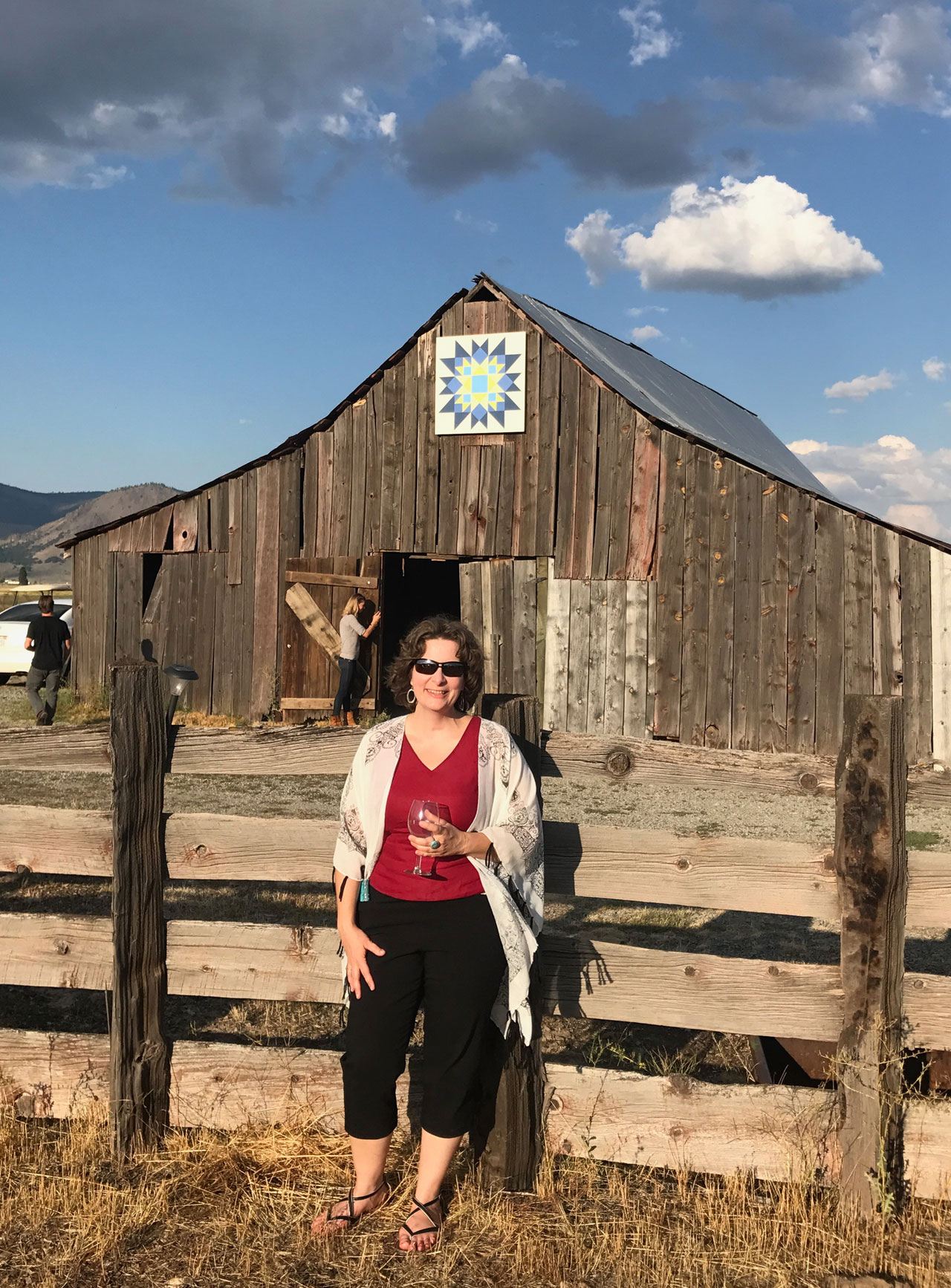
Back in 2021, you wrote about non-local copycat “guides” that draw ads away. Did they perish, or are they still around?
Some perished and some are still around. The real issue is that this market is over saturated with publications that put the name “Tahoe” on them, but are based in Arizona, Las Vegas and other out-of-area locations that have no editorial content (all paid advertorial) and claim to be local. Or, they hire local sales people, but offer no coverage of the community. I have a list I keep, and right now it’s 17 publications that claim to be visitors’ guides and lifestyle magazines in Tahoe. Only two are based in Tahoe. (Not counting newspapers that cover local news.)
The second part of that is that our clients don’t know where these publications are based, where they are being distributed, or what their target market is. They go by price only and independent media can’t compete on price with national conglomerates.
Local businesses are contributing to the demise of local media by not supporting local publications. That’s why we launched our Patron Circle membership program to ask the readers to help fund our work, but it’s not enough. Sadly, I just made the decision this month to cut our arts feature that we’re run for the last 10 years profiling local artists, writers and creators. And I’ll also likely be cutting our arts page that includes coverage of local arts events, exhibits and news without more support.
As a business owner yourself, you probably hear a lot from local entrepreneurs. What do they see as the region’s biggest challenges?
There’s a perception that we have too many tourists, and that traffic is worse. Now, traffic is worse. But our local Placer County supervisor recently shared some information with us. We actually have fewer hotel and rental units actively in use than we did back 20 or 30 years ago, but traffic is worse because we have more vehicle trips. Maybe the stays are shorter—they’re staying three days instead of a week, so you have more turnover in a unit. So there’s a perception that there’s too many people, but the numbers are actually showing that we’re 30 percent down on our visitation. On the one hand, people complain there’s not enough business, but on the other hand, they don’t want marketing for more tourists because they think we have too many tourists already, so it’s a very strange dichotomy.
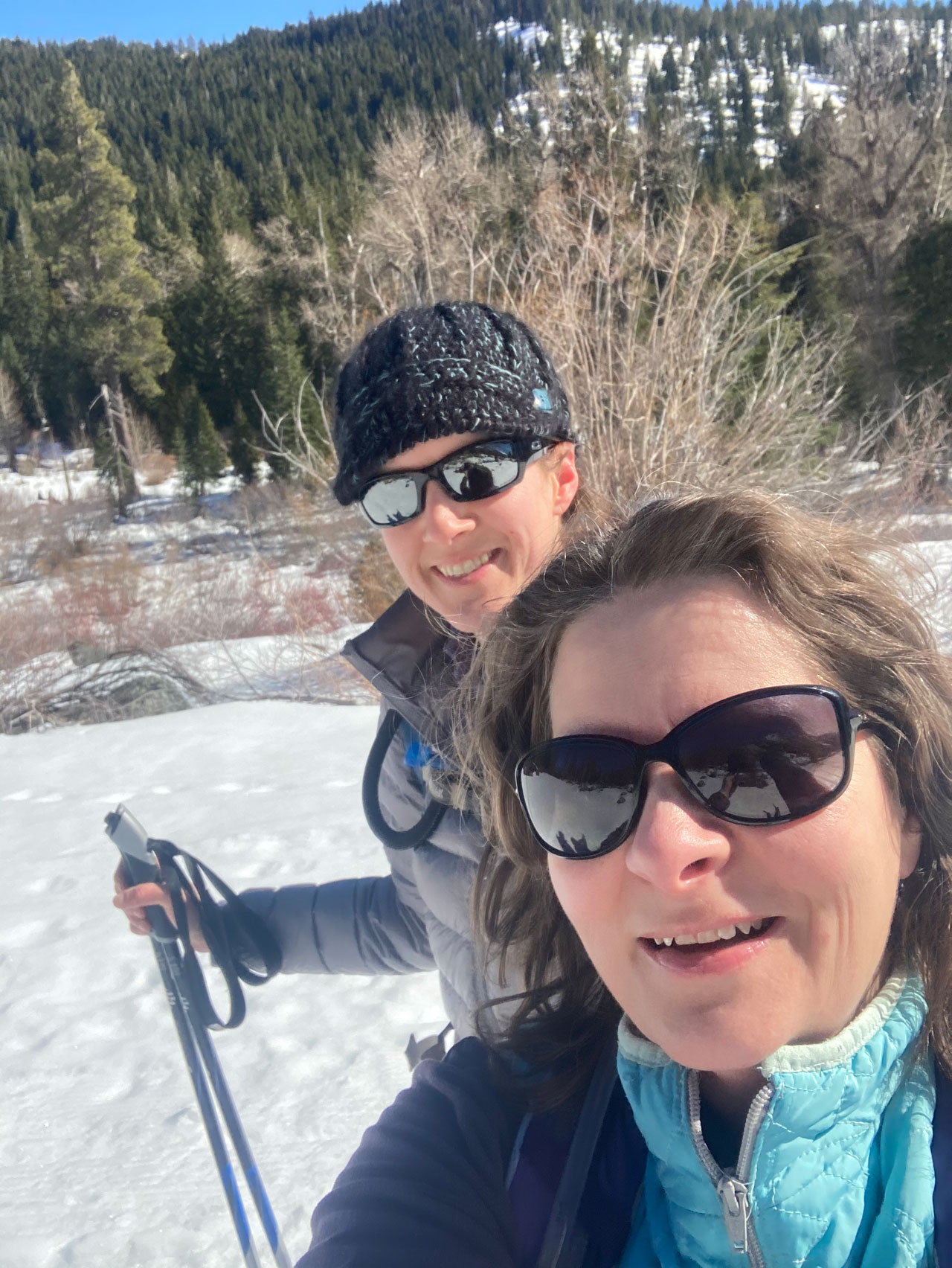
What makes you proudest about your work over the years?
The visitor impact coverage we’ve done—with trash, microplastics, impacts on wildlife—that’s something we weren’t doing before I owned the publication. We are in a unique position to be able to reach vacationers and visitors because we already know they’re looking at the magazine to see what to do, what’s happening, so if we can get them to read a little bit about the trash or the microplastics or traffic or any of the other stuff that they can help make an impact on by making small choices differently than they have been doing, then I feel we need to do that.
The other big thing that I am personally passionate about is public access to public lands. We have so many state and federal lands here that are held by the public, but it’s not all accessible to the public. When I bought the magazine, we started doing more public access and backcountry coverage. Downhill skiing has been on the decline almost steadily for years; backcountry use has been on the increase, from skiers and snowmobile use.
We do an annual “State of the Backcountry.” And we also do one on snowmobile access, which is a hot-button topic almost everywhere in this country where there’s snowmobiles in winter. We’re actually running a story in our Feb. 14 issue on that.
One feature of Tahoe Guide that has always stood out for me are your “bucket lists.”
I’ve been stopped on trails, in restaurants and on boats by people who asked, “Where to you do for this? Where do you go for that?” So years ago I just started doing the bucket list. Then I started challenging myself: how do I make it different every time and come up with new stuff? So I have a running document and I add to it when I think about something new.
Is there anything else you want to add?
If people care about what’s going on in their community, they need to support it. I would encourage anyone to support your local journalists in some way, regardless of the platform, whether it’s a donation, or a subscription, or encouraging local businesses to support them.
I also think it’s important to support each other. I’ve connected with a couple of the other independently owned publishers in our community and we’re collaborating on distribution spots and we share a storage spot. I think working together is important, as we see more small newspapers and magazines snapped up by huge conglomerates that aren’t interested in serving the public or the readers.
Tahoe Guide is a member of the California Local Media Alliance, which means you can find on our site links to all of the magazine’s recent stories in chronological order. To support Tahoe Guide, you can pay for a print subscription, make a donation, or join the Patron Circle.